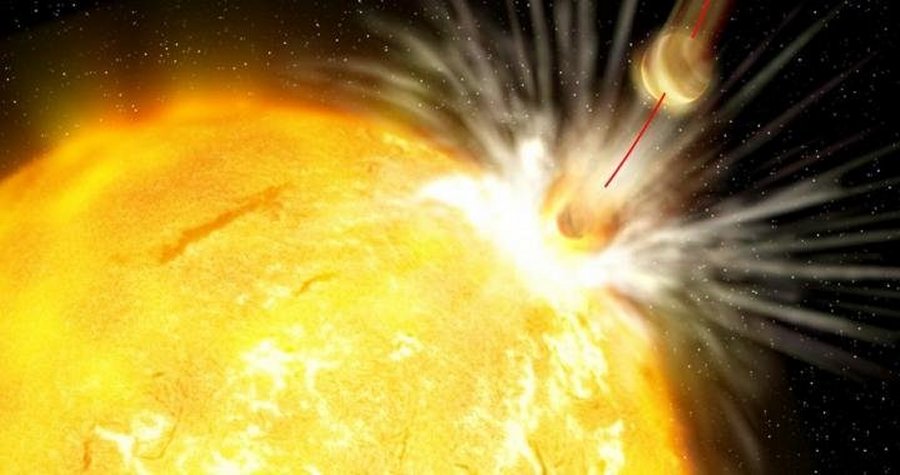MessageToEagle.com – An international team of astronomers has discovered a planetary system with a host star similar to Earth’s sun.
The star HIP68468, located 300 light years away, has an unusual composition that indicates it ingested some of its planets.
“It doesn’t mean that the sun will ‘eat’ the Earth any time soon,” said Jacob Bean, assistant professor of astronomy and astrophysics at UChicago and co-author of a paper.

“But our discovery provides an indication that violent histories may be common for planetary systems, including our own.”
For now, it is too early to draw conclusions from a single system and more stars like HIP68468 have to be studied to confirm whether this outcome of the planet formation process is common.
Astronomers discovered the first planet orbiting a star other than the sun in 1995.
Since then, more than two thousand exoplanets have been identified. Rare among them are planets that orbit a star similar to Earth’s sun. Due to their extreme similarity to the sun, these so-called solar twins are ideal targets for investigating the connections between stars and their planets.
“Computer simulations show that billions of years from now, the accumulated gravitational tugs and pulls between planets will eventually cause Mercury to fall into the sun, said Debra Fischer, a professor of astronomy at Yale University who was not involved in the research.
“This study of HIP68468 is a post-mortem of this process happening around another star similar to our sun. The discovery deepens our understanding of the evolution of planetary systems.”
HIP68468’s composition points to a history of ingesting planets. It contains four times more lithium than would be expected for a star that is 6 billion years old, as well as a surplus of refractory elements—metals resistant to heat and that are abundant in rocky planets.
In the hot interior of stars like HIP68468 and the sun, lithium is consumed over time. Planets, on the other hand, preserve lithium because their inner temperatures are not high enough to destroy the element. As a result, when a star engulfs a planet, the lithium that the planet deposits in the stellar atmosphere stands out.
Taken together, the lithium and the engulfed rocky planet material in the atmosphere of HIP68468 is equivalent to the mass of six Earths.
“It can be very hard to know the history of a particular star, but once in a while we get lucky and find stars with chemical compositions that likely came from in-falling planets,” Fischer said. “That’s the case with HD68468. The chemical remains of one or more planets are smeared in its atmosphere.”
The team continues to monitor more than 60 solar twins, looking for more exoplanets.
MessageToEagle.com






